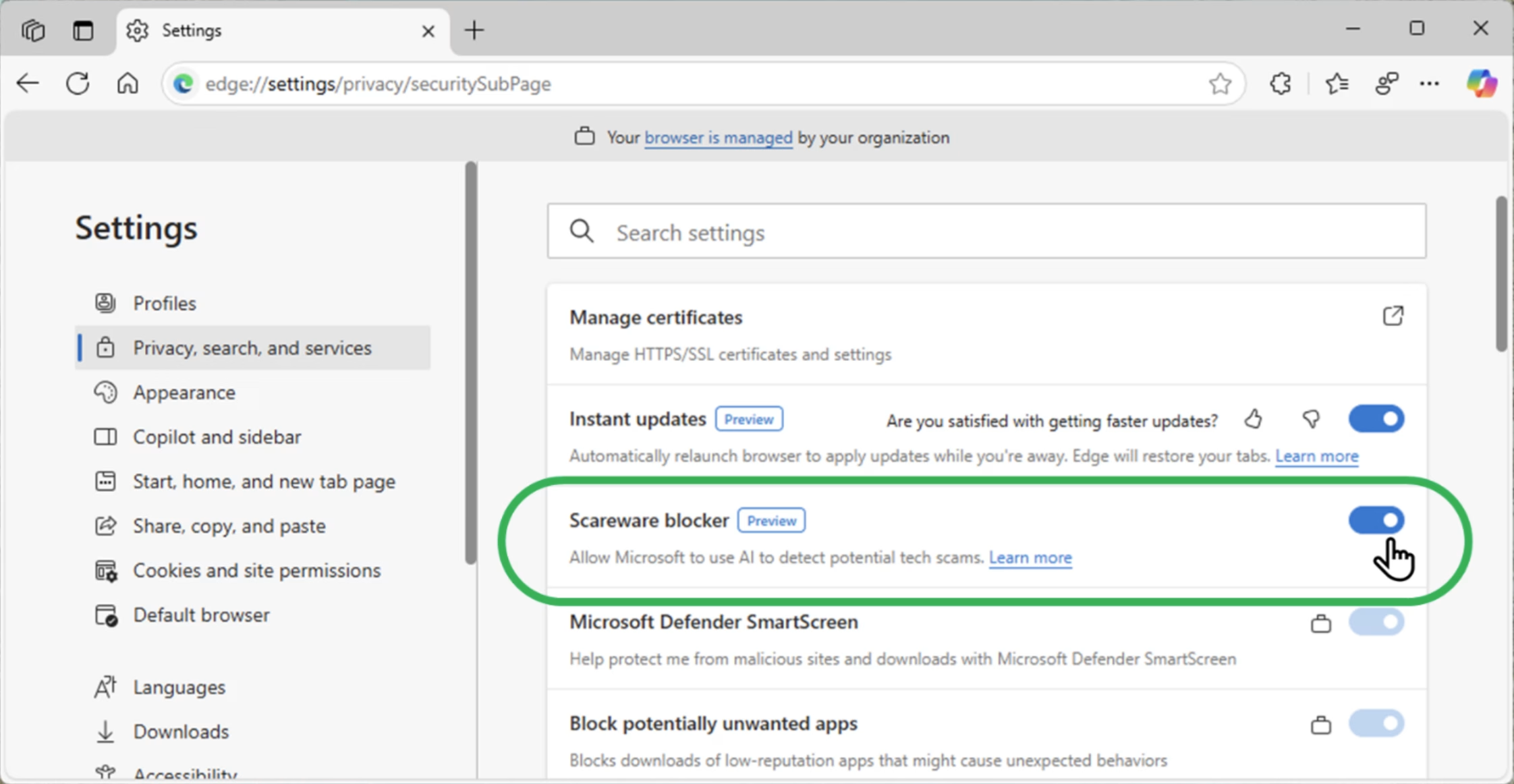Microsoft Edge Rolls Out AI-Powered Scareware Sensor for Rapid Scam Detection
Microsoft Edge has officially launched an advanced, AI-powered "scareware sensor" designed to detect and thwart online tech support scams and fake virus alerts with unprecedented speed. This critical security update, integrated into Edge stable build version 130.0.2849.46, began rolling out to all users on October 29, 2025. The feature represents a significant stride in browser-level defense against manipulative web content, aiming to protect users from deceptive tactics in real-time.
The new sensor targets a persistent and growing threat. Scareware, often manifested as urgent pop-ups or fake system alerts, tricks users into calling fraudulent support lines or downloading malicious software. Cybersecurity reports indicate a 25% year-over-year increase in such attacks, making Edge's proactive defense particularly timely.
Real-Time Behavioral Analysis and Speed
Unlike previous iterations of Microsoft Defender SmartScreen, which often relied on URL blacklisting or reactive blocking, the scareware sensor employs local machine learning models to analyze webpage behavior contextually. It scrutinizes elements like urgency language, fullscreen pop-ups, and the sudden appearance of fake error messages that commonly characterize these scams. And it does so rapidly.
Enhanced User Protection and Industry Reaction
Microsoft's official statement on October 29, 2025, highlighted the sensor as an "AI-powered tool that detects manipulative tactics... alerting users before engagement." The company emphasized that its machine learning models were trained on millions of scam samples, all while upholding user privacy with no data sent to servers without consent. For enterprise users, there's even an opt-in via group policies.
The reception from both the cybersecurity community and users has been largely positive. Security experts, like those at Krebs on Security, have lauded the feature as "a step ahead in behavioral analysis," noting its differentiation from simpler, rule-based systems. On community platforms such as Reddit, users have reported immediate benefits. Many praised the sensor for instantly blocking fake alerts, such as those impersonating McAfee, calling it a "game changer." While a small percentage of users have reported false positives with legitimate advertisements, overall sentiment hovers around 80% favorable.
Differentiating Features and Global Impact
This new feature distinguishes itself from competitors through its deep integration with the Windows Security Center and its emphasis on contextual, real-time analysis rather than just URL reputation. It’s also optimized for offline operation, providing a layer of protection even without a constant internet connection, a critical advantage over cloud-dependent solutions. The improved ML models have reduced false negatives by 30% compared to 2024 versions.
Globally, the rollout has seen region-specific adaptations. In the EU, compliance with the Digital Markets Act means enhanced opt-out options and transparent data notices. For markets heavily targeted by tech support fraud, such as India and Southeast Asia, localized language support has been integrated to specifically counter regional scam tactics. With cybercrime evolving constantly, Edge's scareware sensor offers a robust, free security boost, particularly for users in emerging markets where it may help drive further browser adoption. It just might make browsing a bit safer for everyone.
